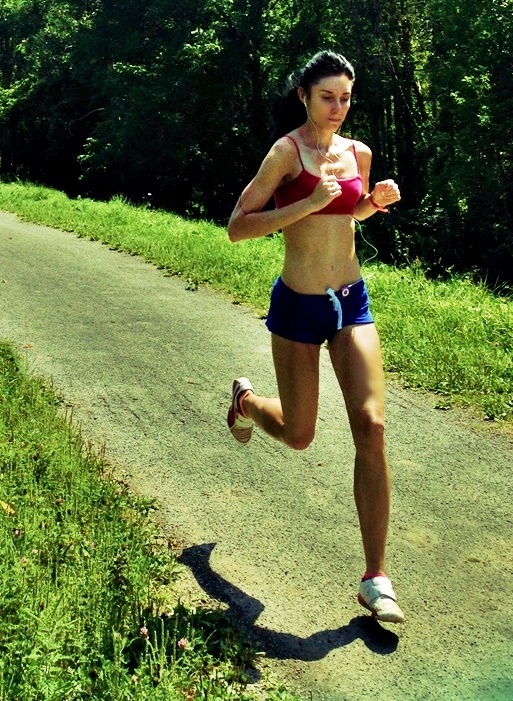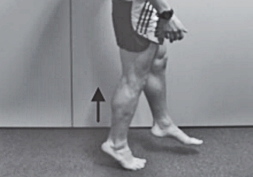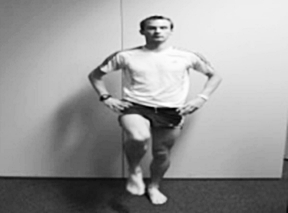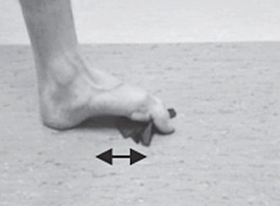I love different perspectives on how to learn forefoot running. Recently I came across another effective learning strategy to forefoot running that I think you’ll enjoy. A study by Warne et al., (2014) provides the framework for an easy forefoot running training guide.
Easy Forefoot Running Training Guide
The researchers found that heel strike runners who preferred the conventional running shoe who transitioned to forefoot minimalist running with proper instruction, showed reduced heel pressures as well as reduced plantar surface pressure.This means the runners learned via instructed guidelines to strike the ground softly when running after transitioning.
The runners were given proper instruction on gait retraining which included a 4-week familiarization period to allow adaptation to the forefoot minimalist running condition (Vibram Five Fingers) without injury.
Here are the following forefoot minimalist running transition tips from the study:
Week 1
Wear minimalist shoes or go barefoot as much as possible in daily routines.
3 days: 5-8 min easy running on the spot; focus on bending both knees and landing soft on your forefoot. Try not to push-off with your toes, rather pick up your feet with your entire leg.
3 days: prescribed exercises** shown below
Week 2
3 days: 10-15 min running on grass, 3 min running on pavement.
3 days: prescribed exercises**
Week 3
2 days: 20 min running on grass, 5-8 min running on pavement
1 day: 25 min running on grass
3 days: prescribed exercises**
Week 4
2 days: 25 min running on grass, 10 min running on pavement
1 day: 30 min running on grass
2 days: prescribed exercises
**Prescribed Exercises for Injury Prevention when Transitioning to Forefoot Minimalist Running:
Calf Raises (3 x 15)
Single Leg Balance (60 sec)
Toe Grabs (3 x 15)
Handy Perceptual Cues on Forefoot Running from the Experts
- Keep stride short and increase cadence (Divert et al., 2005a; Lieberman et al., 2010; Hobara et al., 2012).
- Run light and quiet as possible (Crowell & Davis, 2011).
- Land on the forefoot, allowing heel to contact immediately afterwards (Robbins et al., 1989; Daoud et al., 2012).
- Keep hips forward and head up, running as tall and proud as possible (Lieberman et al., 2010).
The tips are helpful for resetting your running style by providing you with a more structured exposure to minimalist shod and barefoot conditions.
Remember, our ability to run forefoot is innate and minimalist footwear, such as the Vibram Five Fingers, provide additional sensory input from touching the ground, helping you normalize your natural running form.
More Forefoot Running Learning Tips and Resources:
References:
Divert C, Baur H, Mornieux G, Mayer F,Belli A. Stiffness adaptations in shod running. J Appl Biomech 2005a: 2; (4): 311–321.
Hobara H, Sato T, Sakaguchi M, Sato T,Nakazawa K. Step frequency and lower extremity loading during running. Int J Sports Med 2012: 33 (4): 310–313.
Lieberman DE, Venkadesan M, Werbel WA, Daoud AI, D’andrea S, Davis IS,Mang’eni RO, Pitsiladis Y. Foot strike patterns and collision forces in habitually barefoot versus shod runners. Nature 2010: 463 (7280): 531–535.
Robbins et al. Protective sensation of the plantar aspect of the foot. Foot Ankle 1993; 14(6):347–52.
Warne et al. A 4-week instructed minimalist running transition and gait retraining changes plantar pressure and force. Scan J Med Sports, 2014; 24:964–73.
Bretta Riches
BSc Neurobiology; MSc Biomechanics candidate, ultra minimalist runner & founder of RunForefoot. I was a heel striker, always injured. I was inspired by the great Tirunesh Dibaba to try forefoot running. Now, I'm injury free. This is why I launched Run Forefoot, to advocate the health & performance benefits of forefoot running and to raise awareness on the dangers of heel striking, because the world needs to know.
Latest posts by Bretta Riches (see all)
- Can You Run In Barefoot Shoes? Yes, But DON’T Heel Strike! - 21/07/2024
- Why Cushioned Running Shoes Are Really Bad for Your Feet - 19/07/2024
- Do Cushioned Running Shoes Cause Injuries? - 17/07/2024





4vsmhv